
A British comic is a periodical published in the United Kingdom that contains comic strips. It is generally referred to as a comic or a comic magazine, and historically as a comic paper. As of 2014, the three longest-running comics of all time were all British.
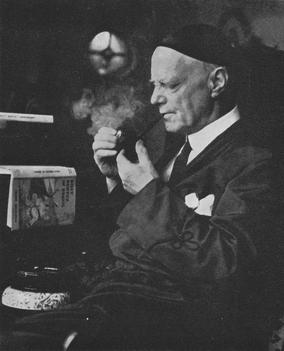
Charles Harold St. John Hamilton was an English writer, specialising in writing long-running series of stories for weekly magazines about recurrent casts of characters, his most frequent and famous genre being boys' public school stories, though he also wrote in other genres. He used a variety of pen-names, generally using a different name for each set of characters he wrote about, the most famous being Frank Richards for the Greyfriars School stories featuring Billy Bunter. Other important pen-names included Martin Clifford, Owen Conquest and Ralph Redway. He also wrote hundreds of stories under his real name such as the Ken King stories for The Modern Boy.

Penny dreadfuls were cheap popular serial literature produced during the 19th century in the United Kingdom. The pejorative term is roughly interchangeable with penny horrible, penny awful, and penny blood. The term typically referred to a story published in weekly parts of 8 to 16 pages, each costing one penny. The subject matter of these stories was typically sensational, focusing on the exploits of detectives, criminals, or supernatural entities. First published in the 1830s, penny dreadfuls featured characters such as Sweeney Todd, Dick Turpin, Varney the Vampire, and Spring-heeled Jack.
The Amalgamated Press (AP) was a British newspaper and magazine publishing company founded by journalist and entrepreneur Alfred Harmsworth (1865–1922) in 1901, gathering his many publishing ventures together under one banner. At one point the largest publishing company in the world, AP employed writers such as Arthur Mee, John Alexander Hammerton, Edwy Searles Brooks, and Charles Hamilton. Its subsidiary, the Educational Book Company, published The Harmsworth Self-Educator, The Children's Encyclopædia, and Harmsworth's Universal Encyclopaedia. The company's newspapers included the Daily Mail, the Daily Mirror, The Evening News, The Observer, and The Times. At its height, AP published over 70 magazines and operated three large printing works and paper mills in South London.

The Magnet was a British weekly boys' story paper published by Amalgamated Press. It ran from 1908 to 1940, publishing a total of 1,683 issues.
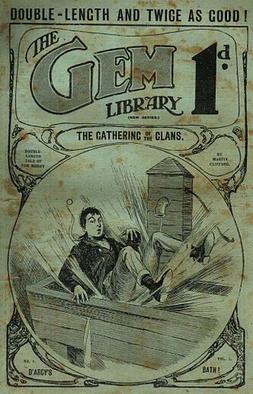
The Gem (1907–1939) was a story paper published in Great Britain by Amalgamated Press in the early 20th century, predominantly featuring the activities of boys at the fictional school St. Jim's. These stories were all written using the pen-name of "Martin Clifford," the majority by Charles Hamilton. Many issues also included a shorter serial story ; these parts of the paper were not written by Charles Hamilton.

Tom Merry is the principal character in the "St Jim's" stories which appeared in the boy's weekly paper, The Gem, from 1907 to 1939. The stories were all written using the pen-name of Martin Clifford, the majority by Charles Hamilton who was more widely known as Frank Richards, the creator of Billy Bunter.
Story Paper Collectors' Digest was a journal published from November 1946 until May 2005, and with special intermittent issues continuing on until late 2007. It was created by Herbert Leckenby. With articles on story papers, it heavily featured the work of Charles Hamilton, Edwy Searles Brooks and the tales of detectives Sexton Blake and Nelson Lee. It was published monthly until 2004. The editors were Herbert Leckenby until his death in October 1959, then Eric Fayne until January 1987 when he retired as editor, then Mary Cadogan.

The Union Jack was a British story paper for children of the late 19th and early 20th centuries. There were two story papers called Union Jack. The first appeared in the 1880s but was only very short-lived. The name was then used by Alfred Harmsworth in 1894 for a new halfpenny story paper intended as a companion to the successful Halfpenny Marvel.
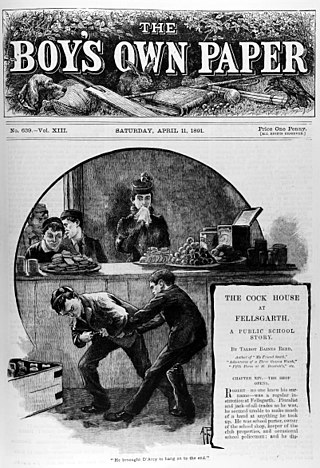
Magazines intended for boys fall into one of three classifications. These are comics which tell the story by means of strip cartoons; story papers which have several short stories; and pulp magazines which have a single, but complete, novella in them. The latter were not for the younger child and were often detective or western in content and were generally greater in cost. Several titles were published monthly whereas the other two categories were more frequent.

The Halfpenny Marvel was a British story paper for children of the late 19th and early 20th centuries, published by Amalgamated Press. It was the first of Alfred Harmsworth's story papers aimed at putting the "penny dreadfuls" out of business by producing "pure, healthy literature" at a cheaper price. Begun in 1893, the magazine was originally named The Halfpenny Marvel Library, but was shorted to The Marvel in 1898. The magazine folded in 1922.
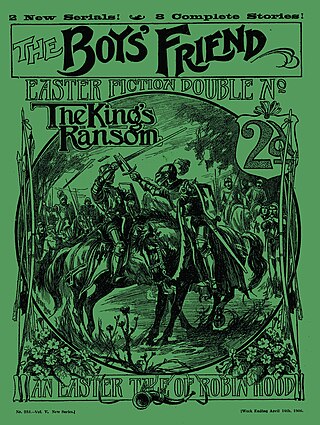
The Boys' Friend was a British story paper of the early 20th century, published by Amalgamated Press from 1895 to 1927.
"Boys' Weeklies" is an essay by George Orwell in which he analyses those weekly story-paper publications for boys which were current around 1940. After being published in Horizon in abridged form, it was published alongside two of his other pieces in Inside the Whale and Other Essays from Victor Gollancz Ltd.
The Schoolgirls' Own was a British weekly story paper aimed at girls. Published by Amalgamated Press, it was launched in February 1921 and ran for 798 issues until May 1936, when it was merged with a sister publication.

The Hotspur was a British boys' paper published by D. C. Thomson & Co. From 1933 to 1959, it was a boys' story paper; it was relaunched as a comic in October 1959, initially called the New Hotspur, and ceased publication in January 1981.

Knockout was a weekly British comics periodical published by Amalgamated Press and later Fleetway Publications and IPC Magazines from 4 March 1939 to 16 February 1963. A boys' adventure comic, the title ran for 1227 issues before being merged with Valiant.

Girls' Crystal was a British weekly fictional anthology publication aimed at girls. Published by Amalgamated Press and later Fleetway Publications from 26 October 1935 to 18 May 1963. Uniquely for an Amalgamated Press title, Girls' Crystal began as a story paper before transforming into a picture comic between editions, with the new format debuting on 21 March 1953. It ran for a combined total of 1432 issues before merging with School Friend in 1963.

Nelson Lee is a fictional detective who featured in the Amalgamated Press papers over a 40-year run. Created in 1894 by Maxwell Scott he appeared in various publications including The Halfpenny Marvel, Pluck, The Boys' Friend, Boys' Realm, The Boys' Herald and the Union Jack In 1915 he was given his own story-paper series, The Nelson Lee Library, which ran until 1933.
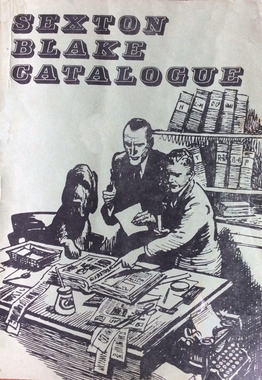
Sexton Blake is a fictional detective who has been featured in many British comic strips, novels, and dramatic productions since 1893. He was featured in various British publications from 1893 to 1978 in a variety of formats: single-issue adventures, short stories, serials, and comic strips. In total, Blake appeared in more than 4,000 stories by over 200 different authors. During its golden age (1920s-1940s), Blake's adventures were widely read and translated into at least twenty different languages, including Swedish, Norwegian, Finnish, Dutch, Spanish, German, Portuguese, Italian, French, Arabic, Hindi, and Afrikaans.















